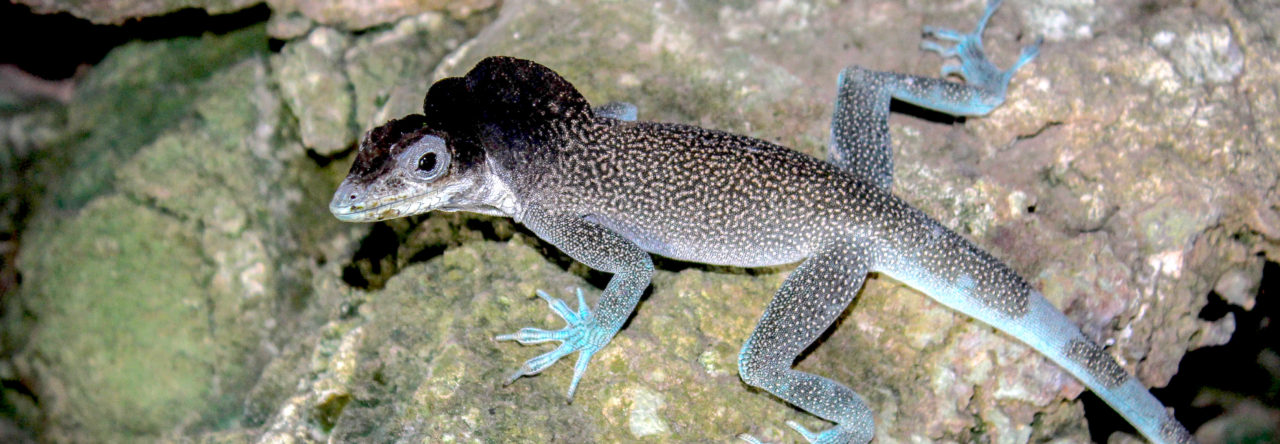Piero Angeli Ruschi from the Ornithology Department in the National Museum in Rio de Janeiro sent the pictures of Anolis punctatus shown here. His story:
“These are the pictures that I took of one of the Anolis specimens that had fallen that day. They fell from the canopy straight to open ground over an area of ~70 squared meters. About 10 specimens fell within ~3 min. It happened in Santa Lucia Ecological Station, at Santa Teresa, ES, Brazil in late september 2007 during the afternoom while I monitored a woodpecker nest.
The individuals were all the same as the one in that picture…green with a yellow circle around the eye…Those pictures might even include more than one individual—I am not sure if the one photographed on the ground was the same I captured (they stayed knocked out for a minute or so before running from where they landed).
I wish I had more data to publish a communication about it, as well as more evidence to explain the cause of it. My ornithological background leads me to the alternative hypothesis of some sort of “arena,” but I have no idea if such thing can be expected for these lizards.”
- Singapore National Parks Studying Impact of Introduced Brown Anoles (and the Greenhouse Frog) - May 2, 2025
- Evolution in Real Time on Lizard Island - March 23, 2025
- Spider Snags Adult Anolis osa - March 22, 2025






Kenneth Barnett
Awesome!!! My IMHO guess, would also be an arena of sorts, for territorial or battles for females. Male to male battles…….ending in falling. Seen this with Green Iguana, and believe it or not, small Passerine birds, and even Corvids sometimes fall to the ground in locked battle.:-)
Kevin de Queiroz
It looks like there are at least two different individuals in those photos. The one in the last photo is better nourished than the other.
Kurt Schwenk
Jonathan et al.—what’s with the weird posture in the second photo? Is this a typical anole defensive stance? It reminds me of the juvenile lacertid mimicking a noxious beetle in the Kalahari described by Ray Huey and Eric Pianka (1977. Natural Selection for Juvenile Lizards Mimicking Noxious Beetles. Raymond B. Huey and Eric R. Pianka. Science 195: 201-203). I’ll post a picture from their paper.
Tony Gamble
Very cool observation! It is possible the anoles are jumping out of the trees to escape a predator. Oliver (1951) mentions anoles leaping from trees to escape predators and has some interesting tests of their gliding abilities. Russell (1979) builds on this and shows leaping from trees is a common anti-predator mechanism in lizards.